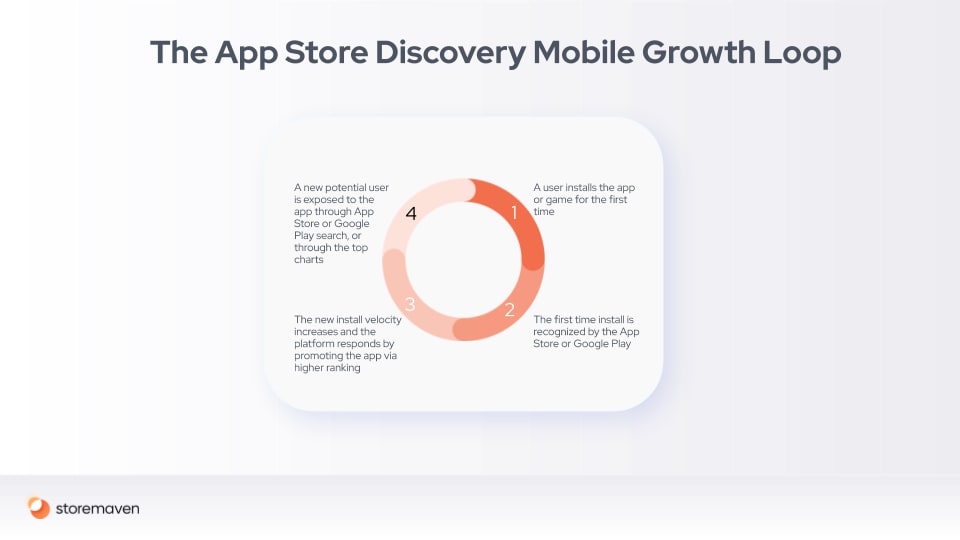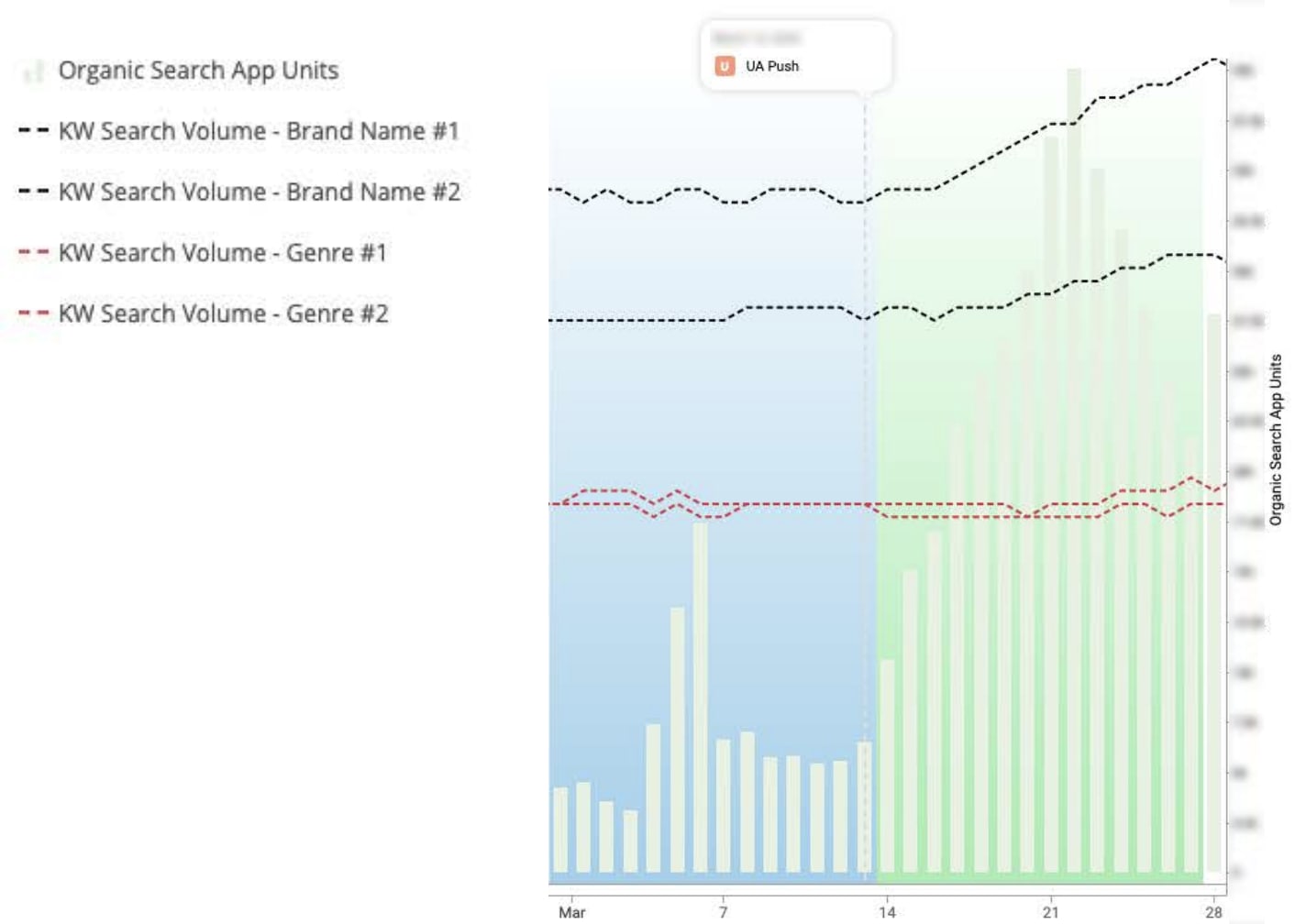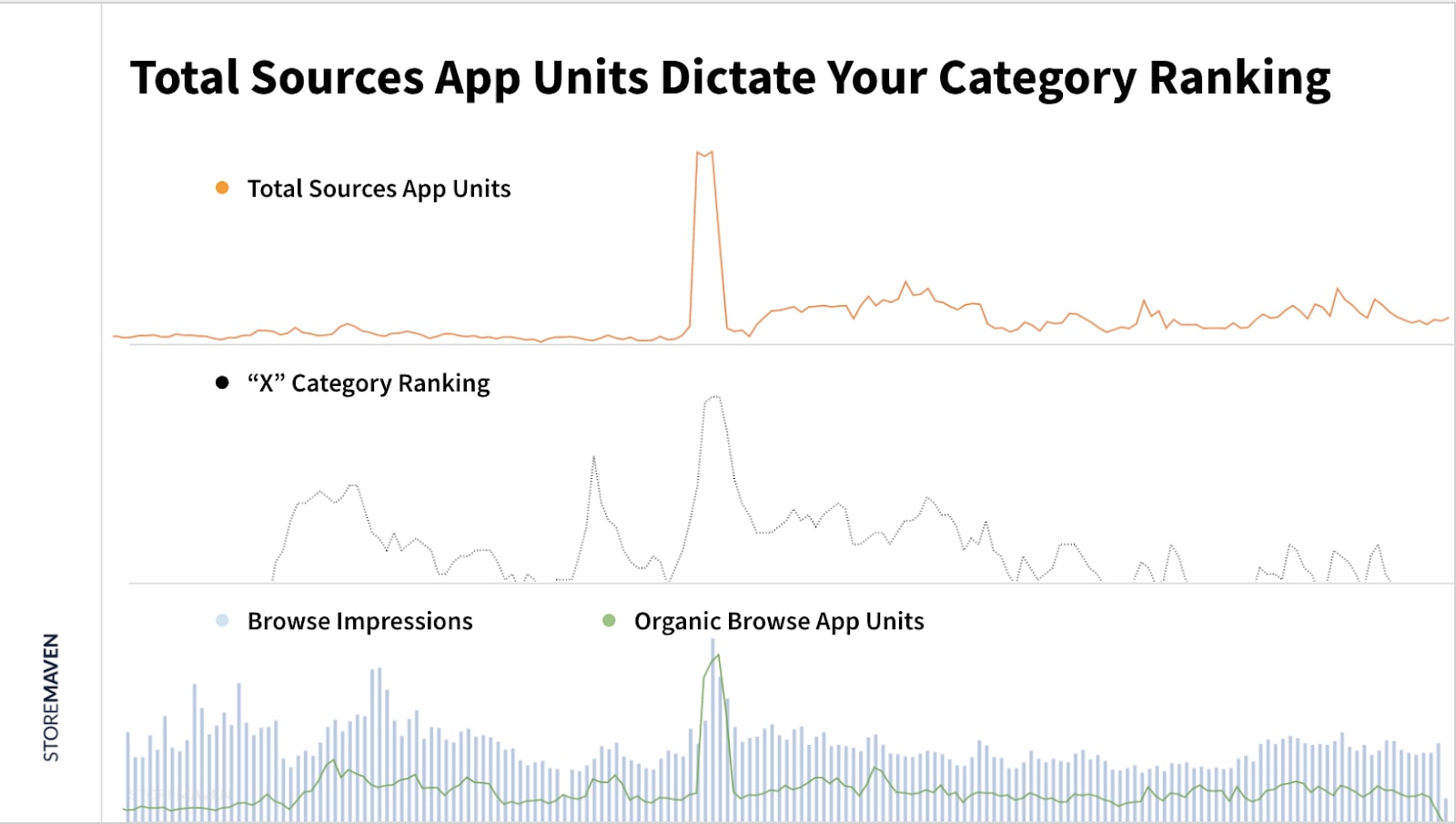The connection between paid user acquisition and organic user acquisition is vital to maximizing mobile growth.
It doesn’t matter if you’re working for a mobile game or an app; there is one common thread that flows through most successful apps and mobile games, those who grow faster than all others: They connect between paid and organic installs, and they use it to create compounding growth.
Why is it important?
A mobile growth team that’ll understand the connection between paid and organic will realize one of the most impactful levers to drive organic install growth. Instead of viewing organic installs as “falling from the sky” without a real way to control and influence them, they take a scientific approach to organic installs.
This scientific approach allows them to take advantage of one of the most popular growth loops in mobile – the App Store/Google Play discovery growth loop.
First things first: The App Store discovery growth loop
The Apple App Store and Google Play Store care about one thing above any other when deciding which apps or games to surface to their users. That is the user experience. Both platforms are deeply invested in getting users to find extremely high-quality apps that’ll give them the best experience around what they are looking for.
They want to do it as soon as possible (similar to how Google wants to give a user the answer he/she is looking for without them going back to search results and continuing to search).
We analyzed App Store and Google Play data – Billions of impressions and hundreds of millions of installs – which showed us that one of the most important metrics the platforms are using to determine the popularity of an app is the come and velocity of first-time installers. Remember, these are App Units in App Store Connect terms, or Store Listing Acquisitions, New Users in Google Developer Console terms.
Both platforms are taking the assumption that the more new users installing the app, the more probable that it’s a popular app that users love, as well as the belief that an app that grows in new users very fast is perhaps too trendy and worth surfacing.
The way that the App Store and Google Play surfaces apps is through:
- Top charts (top apps, top games)
- Category Charts (Games => Puzzles, Entertainment, Travel, etc.)
- Search Results
So seeing this dynamic in action, we see the following loop in play:

- A new user installs an app or game.
- Apple and Google recognize that new user as a first-time installer.
- The app/game first-time install velocity goes up.
- Apple and Google increase the ranking of that app/game.
- More new users view the app listing on top charts, category charts, or search results.
- Back to step one.
Let’s go through the top three insights that you should know about and implement in your day to day (if appropriate).
Insight #1: Brand volume dictates search volume
Your app store keyword search volume consists of two main “buckets.” The first, branded search (searches for your brand name), the second, searches for your “genre” keyword. These “genre” keywords are general keywords that someone looking for an app in your category would use when searching the app stores (for example, “cheap flights”).
You can’t control the genre keyword volume. It represents the general demand in your category (for example, the search volume for flight keywords dropped significantly when COVID-19 erupted, outside of any flight app control). But, you can control the brand portion of your search volume. We found a strong correlation between specific ad channels and branded search.
Each keyword has a popularity score in the App Store, exposed through Apple Search Ads that reflects its relational search volume (Five being the lowest, and 100 being the highest).
We found that when increasing ad spend in specific channels and campaigns, you can increase branded search. The logic is pretty simple, more users are exposed to your brand, and a portion of those users are not directly responding to the ad but searching for the brand name later on.
But understanding this relationship is crucial to attach the value of additional brand search volume and installs to the paid campaigns responsible for driving it.
With this, you can expose the lever of paid spend => brand search volume.

Insight #2: Category ranking dictated by total App Units
The second insight is that your total volume of app units dictates your category ranking or first time installs.
We saw a strong correlation between how many new installs you’re driving to your ranking in your category charts.
This doesn’t mean there is a one-size-fit-all equation for how many new installs you need to rank #1 in your category. It depends on various factors, such as:
- UA seasonality – the more paid user acquisition (aimed at new users) your category competitors are running at a given point in time, the harder it’ll be to outrank them (as you’ll need to drive more new installs in comparison to them). It might change over time as companies increase/decrease their paid UA spend. For example, around Black Friday and Christmas, it might be challenging to reach the top ranking in categories such as Shopping as companies dramatically increase their UA budgets around these times.
- The category you’re in – our category dictates your rank competitors. Suppose you’re competing in a category with many large developers spending millions a month on UA. In that case, it’ll be much harder to contest than going after a high ranking in a less competitive category.
This lever you can use directly affects your App Store Browse or Google Play Explore impressions and installs as more browsers will be exposed to your app store listing in Category charts.
Understanding why this happens is also critical; not all paid campaigns will contribute to your new installs volume. A paid campaign exclusively focused on the re-acquisition of lapsed users will not move that needle at all.
Many teams miss the point when trying to pull this lever as they look at MMP installs instead of platform-reported (App Store Connect/Google Play Developer Console) first time installs.
For example, a paid campaign that drives significant new installs (that never open the app) might be adding value through this lever but won’t show up as such in an MMP dashboard as it only reports installs that open the app.
The only way to understand which ad channels and campaigns are driving new installs that help pull this lever is by analyzing the performance of spend on top of new install volume as reported in the app store developers’ consoles.

Insight #3: Run App Store creative experiments and testing against new users to improve CVR
Using a paid user acquisition budget to improve organic installs through either of these two levers is only one step of the process.
We also found that marketers of the most successful apps and games create a compounding effect by optimizing their app store page creatives for new users.
By running experiments and finding the creatives and messaging that’ll drive new installs from new and broad audiences, these apps maximize the volume of organic installs they get from search results and category charts, even further increasing the volume of new installs and solidifying their position.
This additional lever (that contributes to the other two’s success) can be realized through running app store creative experiments and testing against new users and audiences.
To read more about the methodology of how to run these experiments and increase organic growth, see more about our ASO software here.
Conclusion
After analyzing billions of impressions and hundreds of millions of installs, we found three essential levers that the most successful mobile growth, marketing, ASO, and UA teams use every day.
They understand the levers and “dials” they can turn to increase organic installs, utilize them, and produce extraordinary growth figures as they know the eco-system, mechanics, and how to “signal” to the app stores relevant and popular.
- They are using paid user acquisition spend to drive an increase in organic search through a branded search.
- They are using new user-targeted paid user acquisition spend to increase browse performance through increased rankings.
- They are using app store creative experimentation to create a compounding effect and enhance the other levers’ performance.
Use these to build your scientific approach to organic installs and show the value paid user acquisition can bring to organic growth.












